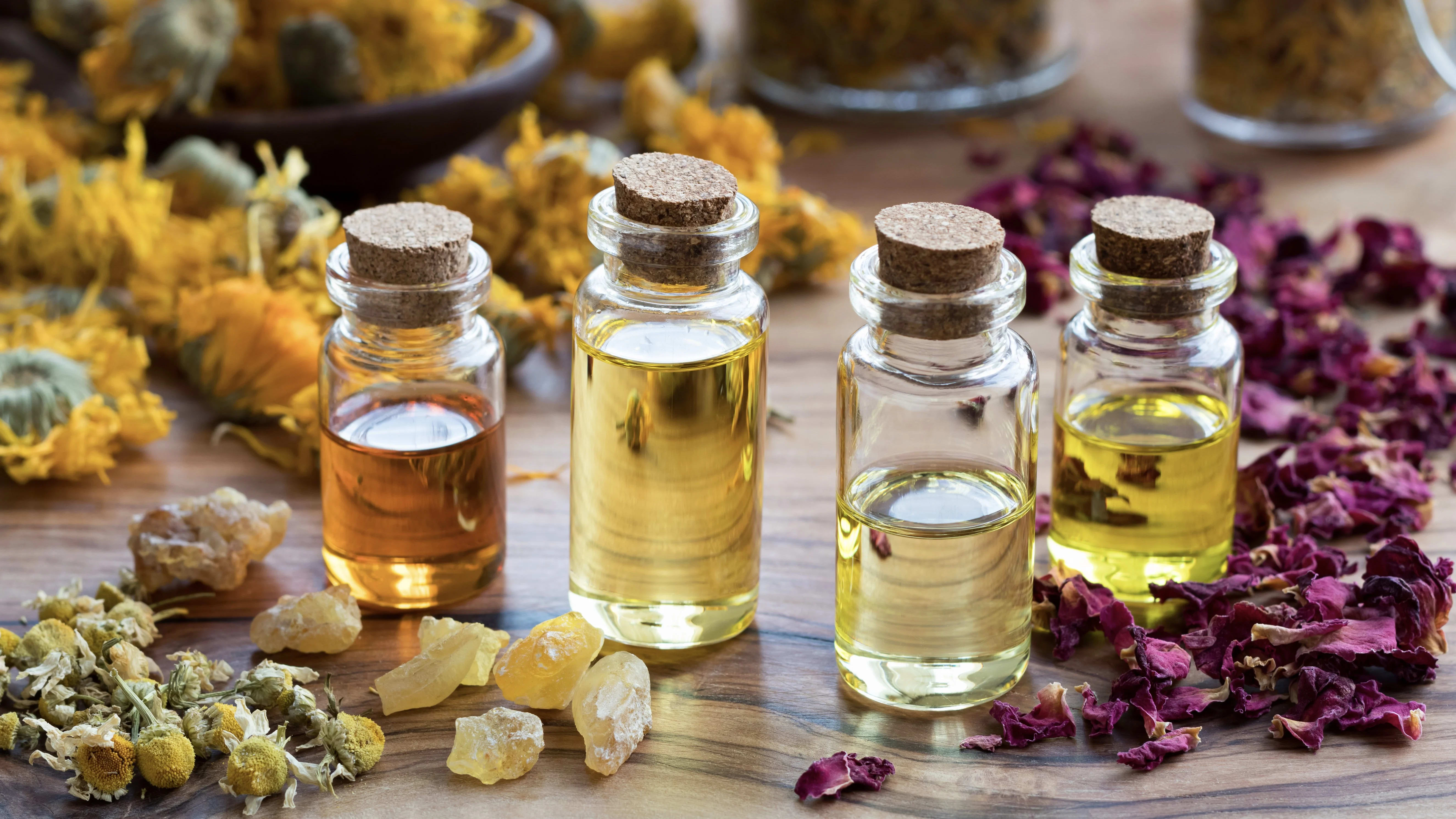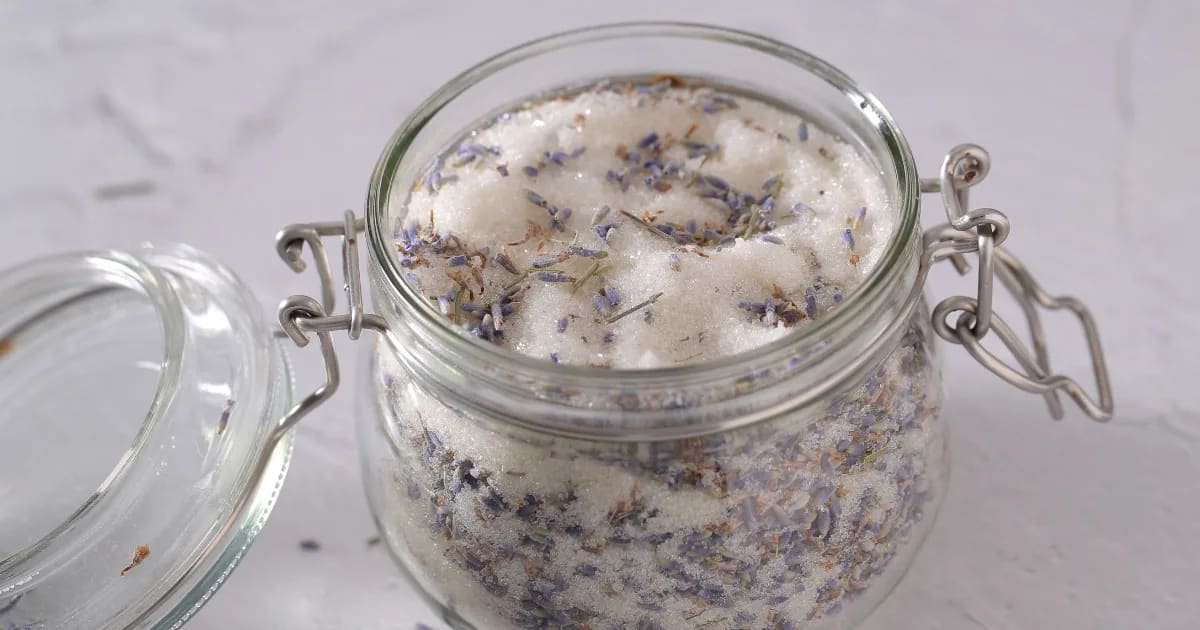Bee Balm Oil for a Clean, Hygienic Home

A Clean Home is a Healthy Home
Recently, I experienced a health challenge with an unexpected culprit. Living in Montana, with its typically dry climate, I was surprised when a series of tests unveiled the unlikely source of my issues: mold! This nasty pathogen was lurking in the hidden nooks of my front-load washing machine. As I soon learned, even minimal amounts of mold can have a significant impact on our well-being.
To remedy this, I chose to invest in a new washing machine and have since incorporated the use of essential oils into my cleaning regimen to keep it mold-free.
In this post, we'll explore how to use Bee Balm oil to effectively clean your home, targeting fungi (including mold), bacteria, and viruses. You’ll discover the potent components in Bee Balm oil that combat microbes and learn how to make a natural, all-purpose disinfecting spray. This spray will ensure that your home maintains a clean, healthy, and comfortable environment!
Any time is a good time to cleanse our homes and embrace fresh, healthy energy. Bee Balm oil, with its powerfully supportive properties, is a 'warrior oil' that can help us maintain a positive and healthful atmosphere throughout the year. (Learn more about its benefits and uses here.)
The Research: Bee Balm Fights Microbes
Bee Balm oil’s main component is carvacrol, and it also contains a bit of thymol. These components give Bee Balm such potent germ-fighting effects that I trust it to prevent infection in wounds.
Research has validated the power of these components against microbes! Here is a simple overview of the findings from various studies:
Fungi and mold: In a 2008 study, carvacrol and thymol “completely inhibited mycelial growth of 17 pathogenic fungi and their antifungal effects were higher than commercial fungicide.” That means they were able to prevent 17 types of fungi and mold from growing—completely!
Bacteria: A 2016 study on Staphylococcus showed that essential oils containing carvacrol and thymol “were found to be strongly bactericidal.” And a 2007 study showed that carvacrol can prevent flagella from forming on E. coli bacteria. (Without flagella, the bacteria can’t move around.) It also has actions against other bacteria strains, including Salmonella, Shigella, and H. Pylori.
Viruses: Thymol has been found to “inhibit different human and animal viruses in vitro.” It’s so effective that both the United States EPA and Canadian Government recommend thymol-rich cleaners to “disinfect external hard surfaces and hands in healthcare, institutional, or residential applications.”
Blending with Bee Balm for Cleaning
Bee Balm’s robust germ-fighting properties make it a prime choice for cleaning blends, and we can augment it with other antimicrobial essential oils.
Here is a great tip: Cleaning blends are a perfect opportunity to make use of essential oils in our collection that are older and reaching the end of their shelf life. Essential oils oxidize and lose potency as they age (learn more about that here), and we want to use them up before this happens so that they do not go to waste.
Citrus oils are beautiful options. Their shelf lives are only a year or two, so we need to be sure to use them up more quickly. All citruses are rich in d-limonene, and this component helps to destroy microbes. Plus, their fresh, fruity scents work well to soften Bee Balm’s strong aroma. Try Lime (Citrus aurantifolia) or Lemon (Citrus limon).
You could also give your blend a fresh, foresty note by adding a conifer oil, like Balsam Fir (Abies balsamea) or Hemlock (Tsuga canadensis). Conifer oils have a fresh, fortifying energy, and they are effective airborne antimicrobials.
Eucalyptus oil (Eucalyptus globulus) brings a clearing, awakening aspect to your blend, or a few drops of Cinnamon Bark oil (Cinnamomum verum) will contribute a warm, festive note.
I will sometimes add Oregano (Origanum vulgare) or Thyme ct thymol (Thymus vulgaris ct thymol). Like Bee Balm, these are “warrior oils” that contain the components carvacrol and thymol. Oregano and Thyme ct thymol are strong oils with harsher aromas that match their powerful antimicrobial actions. When I blend with them, I use them in limited amounts and with respect.
Bee Balm Safety Guidelines
Oils that contain phenols such as carvacrol and thymol can irritate skin and mucous membranes and need to be used with caution.
For topical blends, use Bee Balm essential oil at a 1% concentration—that’s 5 or 6 drops in 1 oz (30 ml) of carrier.
When creating topical blends, I choose to combine Bee Balm with skin-nourishing essential oils, like Lavender (Lavandula angustifolia) and rich carriers, such as shea butter and jojoba oil, that will balance the aggressive nature of its phenols.
It is important that we observe the 1% dilution guideline for topical products, because our potent “warrior oils” like Bee Balm have a risk of causing skin irritation or sensitization in higher concentrations. These strong oils can also be harsh on the mucous membranes, so we are careful to limit them in blends that are directly inhaled, such as in inhalers. However, for applications such as cleaning sprays, room sprays, or diffuser blends, we can mindfully use a higher concentration of these oils.
A Recipe: “Clean Bee” All-Purpose Cleaning Spray

“Clean Bee” All-Purpose Cleaning Spray
1 fl oz (30 ml) 190 proof alcohol (Everclear is what I use)
3 fl oz (90 ml) water
50 drops Lime oil (Citrus aurantifolia)
20 drops Bee Balm oil (Monarda fistulosa)
10 drops Oregano oil (Origanum vulgare)
Directions for Making a 4 oz (120 ml) Essential Oil Blend in a PET Plastic or Glass Spray Bottle
Start with Alcohol and Essential Oils: Pour the alcohol and essential oils into the 4 oz (120 ml) spray bottle. The alcohol helps to solubilize the essential oils, ensuring they disperse evenly in the blend and also acts as a preservative.
Allow the Mixture to Rest: Let the mixture of alcohol and essential oils sit for about an hour. This resting period is important for the alcohol to effectively solubilize the essential oils.
Add Water, or Add Hydrosol Instead of Water: Instead of adding water, fill the rest of the bottle with your preferred hydrosol, such as Lavender or Thyme. Hydrosols bring their own therapeutic benefits and a subtle, natural fragrance to the blend, enhancing its overall effect and aroma.
Shake Well Before Each Use: Ensure you shake the blend well before every use. This helps to mix the essential oils, alcohol, and hydrosol together, maintaining a consistent quality in every spray.
General Surface Cleaning: Use this blend to clean countertops, doorknobs, cabinet handles, and sinks. It's effective for removing everyday grime and leaves a fresh scent.
Special Use in Bathrooms: The blend works exceptionally well as a bathroom cleaner. It can be particularly effective as an after-shower spray to prevent mold and mildew growth. Simply spritz it over the shower area, paying close attention to corners and crevices where humidity and mold tend to accumulate.
Pre-Cleaning Surface Test: Before using it on any surface, it's wise to test the blend on a small, inconspicuous area. This helps ensure that the surface doesn’t react adversely to the blend.
Using in the Washing Machine:
For Machine Cleaning: To use the blend in your washing machine, replace the alcohol with vinegar. This adjustment makes the blend suitable for machine cleaning without needing to rest for an hour. Just make your blend, add it directly to the detergent compartment, and run an empty wash cycle.
For Machine Freshening: You can also open the washing machine and spritz the blend inside to freshen it up and keep it clean. Pay special attention to the seal around the door where mold is prone to developing!
Cleaning and refreshing my space is not just about tidiness – it’s an act of reverence and respect for the sanctuary I call home. By creating all-natural products to sanitize my environment, I am also consciously choosing to eliminate toxic chemicals from my daily routines. This is a vital part of my personal journey toward a healthier, more balanced life, and an expression of care and gratitude for myself and the environment.
My Takeaway
Bee Balm is a remarkable ally in maintaining a clean and healthy home! Its carvacrol and thymol are a formidable force against a wide range of microbes. Aromatically, Bee Balm harmoniously melds with the refreshing scents of citruses, the earthy and forest tones of conifers, and the warm notes of spice oils. Such a wonderful array of blending possibilities to keep our spaces beautifully fresh!
My 'Clean Bee' recipe is more than just a cleaning solution; it's a testament to the potential of natural, aromatic ingredients in creating a space that's not only germ-free but also vibrantly healthy. This blend has become an integral part of my routine, ensuring my home is a sanctuary of cleanliness and wellbeing.
Bee Balm’s manifold benefits extend beyond cleaning, and I hope you will join me for next week’s exploration of its antioxidant properties. I’m excited to share with you how this oil can offer protection for skin cells and prevent irregular cell development, which is a factor in larger health concerns. Just as Bee Balm helps us to maintain a healthy outer environment, it can safeguard the integrity of our cells and defend our overall wellness.
References
Alali, W. Q., Hofacre, C. L., Mathis, G. F., & Faltys, G. (2013). Effect of essential oil compound on shedding and colonization of Salmonella enterica serovar Heidelberg in broilers. Poultry science, 92(3), 836-841.
Astani A, Reichling J, Schnitzler P (2010) Comparative study on the antiviral activity of selected monoterpenes derived from essential oils. Phytotherapy Research 24(5):673-679
Bagamboula, C. F., Uyttendaele, M., & Debevere, J. (2004). Inhibitory effect of thyme and basil essential oils, carvacrol, thymol, estragol, linalool and p-cymene towards Shigella sonnei and S. flexneri. Food microbiology, 21(1), 33-42.
Bekka-Hadji, F., Bombarda, I., & Touati, A. (2016). Antibacterial activity against methicillin-resistant Staphylococcus aureus of five essential oils from Algerian medicinal plants (Lamiaceae). Journal of Essential Oil Research, 1-10.
Burt, S. A., van der Zee, R., Koets, A. P., de Graaff, A. M., van Knapen, F., Gaastra, W., Haagsman, H.P., & Veldhuizen, E. J. (2007). Carvacrol induces heat shock protein 60 and inhibits synthesis of flagellin in Escherichia coli O157: H7. Applied and environmental microbiology, 73(14), 4484-4490.
Gilling DH, Kitajima M, Torrey JR, Bright KR. Antiviral efficacy and mechanisms of action of oregano essential oil and its primary component carvacrol against murine norovirus. J Appl Microbiol. 2014;116(5):1149-1163. doi:10.1111/jam.12453
Kordali, S., Cakir, A., Ozer, H., Cakmakci, R., Kesdek, M., & Mete, E. (2008). Antifungal, phytotoxic and insecticidal properties of essential oil isolated from Turkish Origanum acutidens and its three components, carvacrol, thymol and p-cymene. Bioresource Technology, 99(18), 8788-8795.
Kowalczyk, A., Przychodna, M., Sopata, S., Bodalska, A., & Fecka, I. (2020). Thymol and Thyme Essential Oil-New Insights into Selected Therapeutic Applications. Molecules (Basel, Switzerland), 25(18), 4125. https://doi.org/10.3390/molecules25184125
Lesjak, M., Simin, N., Orcic, D., Franciskovic, M., Knezevic, P., Beara, I., Aleksic, V., Svircev, E., Buzas, K., & Mimica‐Dukic, N. (2016). Binary and tertiary mixtures of Satureja hortensis and Origanum vulgare essential oils as potent antimicrobial agents against Helicobacter pylori. Phytotherapy research, 30(3), 476-484.
Vimalanathan, S., & Hudson, J. (2014). Anti-influenza virus activity of essential oils and vapors. American Journal of Essential Oils and Natural Products, 2(1), 47-53.
Wang, L., Wang, D., Wu, X., Xu, R., & Li, Y. (2020). Antiviral mechanism of carvacrol on HSV-2 infectivity through inhibition of RIP-3-mediated programmed cell necrosis pathway ubiquitin-proteasome system in BSC-1 cells. BMC Infectious Diseases, 20, 832 (2020). https://doi.org/10.1186/s12879-020-05556-9





